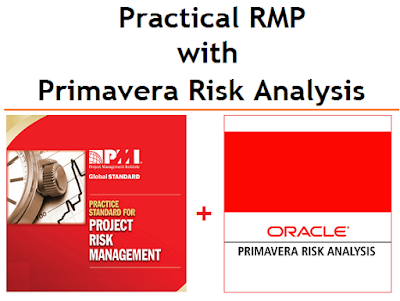Considering the key interest that management professionals have on risk management and risk management being of high importance in many industries, this new course has been launched. It an unique program combining both theory and practical. This program prepares you fully for Risk Management Professional certification (RMP®) from PMI with hands-on practicals on Oracle Primavera Risk Analysis®.
Why this course?
The Risk Management Professional (RMP) certification from PMI is widely accepted as the global benchmark to recognize proficiency in Project Risk Management. However, the Practice Standard for Project Risk Management, on which the RMP certification is based, is theoretical. In the real world, while theory is important, it is equally important to know the practical aspect, i.e., how to apply the risk management practices in the real world.
Also, many risk or project management professionals use various tools such as Microsoft Project or Oracle Primavera, to create project plans and for risks, use a different tool. But they not for complete risk management or risk analytics.
For example, in real life, you need to know:
- How to create a risk register and have the risk governance parameters for analysis?
- How to create risk break down structure or perform risk probability and impact assessment?
- How to perform risk sensitivity analysis such as Monte Carlo analysis?
- How to conduct risk response planning with various strategies for negative and positive risks?
- How to continuously find the effectiveness of your risk responses?
How this course helps?
In all the above cases, Practical RMP with Primavera Risk Analysis helps - for both a risk management professional and a project management professional.
Primavera Risk Analysis (PRA) from Oracle is a widely used risk management tool to manage large scale, multifaceted project risks and conduct detailed risk analytics. It covers the entire set of Risk Management processes – Plan Risk Management, Identify Risks, Qualitative Risk Analysis, Quantitative Risk Analysis, Risk Response Planning and Control Risks.
This program not only covers the 5 major processes with its input,tools & techniques, outputs, various tasks, knowledge and skills as needed to be Risk Management Professional, but also how with the helps to integrate with scope management, schedule management, cost management et al.
In Short: Practical RMP with Primavera Risk Analysis is combination of theory - from Practice Standard for Project Risk Management and practical - with Oracle Primavera Risk Analysis software. In addition, this course is synchronized with PMBOK Guide, 5th Edition.
What it contains?
This course is moduralized and has 11 modules. It is built on with a number of hands-on practicals and has taken a step by step approach. In the practicals where you learn a whole gamut of Risk Management practices practices. They will be applicable across various processes for Risk management and multiple Inputs, Tools and Techniques and Outputs.
Some of the items, used in real world, that you will know through multiple hands-on practicals are:
- Risk Register - Both Qualitative Risk Register and Quantitative Risk Register as well the Risk Register post response planning
- Probabilistic Distribution and Monte Carlo simulation
- Sensitivity Analysis - Tornado Diagram/Chart
- Risk Adjusted S-Curve Analysis
- Risk P-I matrix in a graphical way and finding out what the important risks to look into
Detailed course is outlined here - Link.
For more details about the program, following reference links will help:
- Practical RMP with Primavera Risk Analysis R8.x - Course Overview (Link)
- Practical RMP with Primavera Risk Analysis R8.x - Complete Course Detail (Link)
- Practical RMP with Primavera Risk Analysis R8.x - Course Benefits (Link)
- Practical RMP with Primavera Risk Analysis R8.x - Certification Process for RMP (Link)
- Practical RMP with Primavera Risk Analysis R8.x - Who Can Attend (Link)
- Practical RMP with Primavera Risk Analysis R8.x - Frequently Asked Questions(FAQ) (Link)
The details of this course is also available at - Practical PMP with Primavera Risk Analysis.
Eligibility criteria:
The eligibility criteria is in sync with PMI's Risk Management Professional certification criteria. It is outlined here - Link
How to get access to this course?
Please drop me a mail at my mentioned contact details in About section or you can use the Quick Contact form - displayed on the top right hand corner of this blog.
You may also like:







